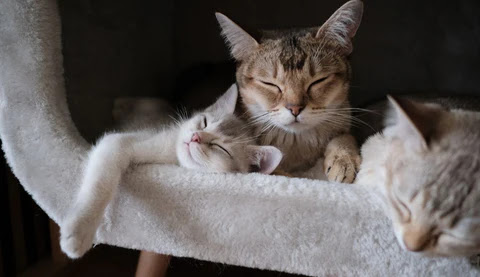how to introduce cats? Explain in detail
Introducing Cats to Each Other
Introducing cats to each other can be a challenging but rewarding process. Whether you’re adding a new feline friend to your existing cat household or introducing two cats to each other for the first time, there are a few key steps you can take to ensure a smooth transition and promote a positive relationship between your furry companions.
Bonding Cats Together
Creating a strong bond between your cats is essential for fostering a harmonious environment at home. When introducing cats, it’s important to give them ample time and space to get to know each other gradually. This process helps build trust and encourages positive interactions between the cats.
Bringing New Cats Home
Bringing a new cat into your home is an exciting time, but it’s crucial to make sure you’re prepared to facilitate a successful introduction. Before bringing the new cat home, set up a designated area where they can initially stay separate from your existing cat(s).
Tips for Cat Introductions
Introducing cats requires patience and careful planning.
Here are some tips to help make the introduction process go smoothly:
- Gradual Introduction: Allow the cats to become familiar with each other’s scent before they have direct contact. Swap bedding or use a piece of cloth to rub on one cat and then offer it to the other cat.
- Supervised Meetings: Initially, it’s best to keep the cats separated by a door or baby gate, allowing them to see and smell each other without direct physical contact. Gradually increase their interaction under supervision.
- Positive Reinforcement: Reward and praise both cats for calm and friendly behavior during their interactions. Use treats or toys to create positive associations during their meetings.
- Individual Attention: While introducing the cats, make sure to spend quality time with each of them individually to prevent feelings of jealousy or neglect.
- Resource Management: Ensure that each cat has their own food bowls, litter boxes, and resting areas. This reduces competition and helps prevent potential conflicts.
Cat Introduction Mistakes
While introducing cats, it’s important to avoid common mistakes that can lead to tension or aggression. Understanding these mistakes will help you create a more positive environment for your cats:
- Forceful Introductions: Forcing cats into immediate physical contact can lead to fear or aggression. Allow them to set the pace and become comfortable with each other gradually.
- Neglecting Individual Needs: Each cat has unique needs and preferences. Neglecting these individual needs can lead to stress and potential conflicts. Ensure each cat has their own space and resources.
- Skipping the Introduction Process: Jumping straight into shared territory without proper introductions can result in territorial disputes and aggressive behavior. Take the time to introduce the cats properly.
- Ignoring Warning Signs: If one cat displays signs of aggression or distress, such as hissing, growling, or swatting, take a step back and slow down the introduction process. Ignoring these warning signs can escalate the situation.
Ensuring Cat Compatibility
It’s important to consider cat compatibility when introducing new feline members to your household. While some cats may naturally get along well, others may have more difficulty forming a bond. Factors such as age, gender, and personalities can influence compatibility.
When selecting a new cat to introduce to your household, try to choose one with a personality that complements your existing cat. For example, if your current cat is laid-back and enjoys a calm environment, a highly energetic kitten may not be the best match. Consider consulting with shelter staff or a veterinarian for guidance in finding a compatible feline companion.
Cat Integration at Home
Once the initial introductions have taken place and your cats have begun displaying positive interactions, it’s time to proceed with integrating them into your home.
Here are some steps to follow:
- Gradual House Access: Allow the cats to explore new areas of the home one at a time, starting with shared spaces and gradually expanding their access as they become more comfortable.
- Supervised Interaction: Continue to supervise the cats’ interactions until you are confident in their ability to coexist peacefully without supervision.
- Encourage Play and Positive Experiences: Encouraging play and providing opportunities for positive experiences, such as interactive toys and treats, can help strengthen the bond between your cats.
- Establish a Routine: Structure and routine can help cats feel more secure and reduce potential conflicts. Establish consistent feeding times and provide separate resources for each cat.
Building Cat Relationships
Building strong relationships between your cats takes time and patience.
Here are some additional tips to help nurture a positive bond:
- Provide Vertical Space: Cats feel more secure when they have vertical spaces to climb, such as cat trees or shelves. This also allows them to observe each other from a safe distance.
- Use Positive Reinforcement: Reward desirable behaviors, such as calm interactions and playing nicely together, with treats or praise.
- Playtime Together: Engage in interactive play sessions that involve both cats. This helps them associate positive experiences and build a bond through shared activities.
- Monitor and Mediate: Keep an eye on the cats’ interactions and be ready to intervene if tensions rise. Redirect their attention to positive activities or provide separate spaces for them to cool down.
Remember, every cat is unique, and the introduction process may vary depending on their individual personalities. Stay patient, observe their body language, and make adjustments as necessary. With time and proper introductions, your cats can form a long-lasting and harmonious relationship.













